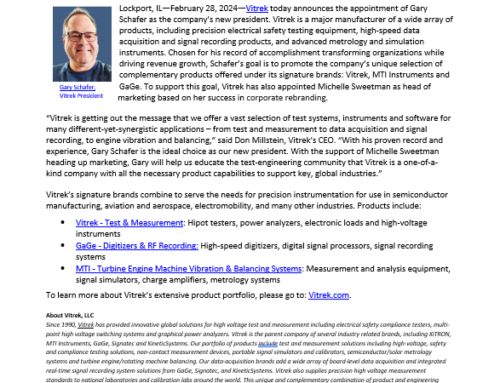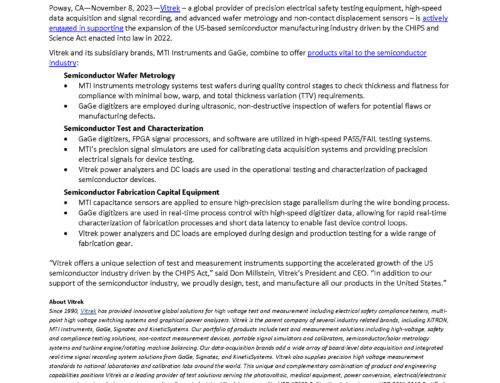
MTI Instruments, a global supplier of precision measurement solutions, has released an application note that explains how to measure very small movements in piezo devices that convert mechanical energy into electrical energy. Precision measurement of these dynamic, oscillatory motions is required for the research and development (R&D), testing, and troubleshooting of piezo ceramic materials, advanced ceramics that are used in actuators, sensors, and the power modules of ultrasonic welders. Piezo applications range from automotive sensors and medical devices to engineering projects and consumer products.
MTI’s App Note explains how its MTI-2100 Fotonic sensor, when used in conjunction with a spectrum analyzer, can achieve a resolution of <5 angstroms provided that the motion is sinusoidal and the amount of noise is significant. This advanced fiber-optic, non-contact sensor from MTI Instruments features a built-in peak-to-peak display and interchangeable probe modules. In the App Note, the MTI 2032RX probe was used. A signal generator was used to drive a piezo stack, layered piezoelectric elements that expand and contract when voltage is applied. In equipment such as ultrasonic welders, piezo stacks are used as actuators in feedback controls (piezo stages). An oscilloscope was used to display varying signal voltages.
The MTI-2100 Fotonic sensor makes highly precise measurements of displacement. The MTI 2032RX probe can accommodate a wide range of targets by reflectivity or shape. As MTI’s App Note explains, researchers can control the magnitude of displacement by controlling the amplitude of the applied signal. Yet scientific research isn’t the only application for MTI’s precision measurement solution. In ultrasonic welders, the degradation of piezo stacks over time hurts weld quality. By measuring ultrasonic amplitude, technicians can check power levels during preventive maintenance.
In automotive, engineering, medical, and consumer applications, piezo stacks or actuators produce deformations in the micrometer range. Together, the MTI-2100 Fotonic sensor with MTI 2032RX probe can resolve down to about 1-2 nanometers. Equipment and mechanical engineering applications include not only ultrasonic welding, but also ultrasonic cleaning and distance sensors. Ultrasonic aspirators are used in medical applications. Consumer applications for piezo ceramics range from alarms to atomizers.
With the bandwidth in MTI’s App Note, resolution as low as 200uV rms ~ 0.5 nm is possible. During the test, the signal-to-noise ratio on the spectrum analyzer was quite large.



